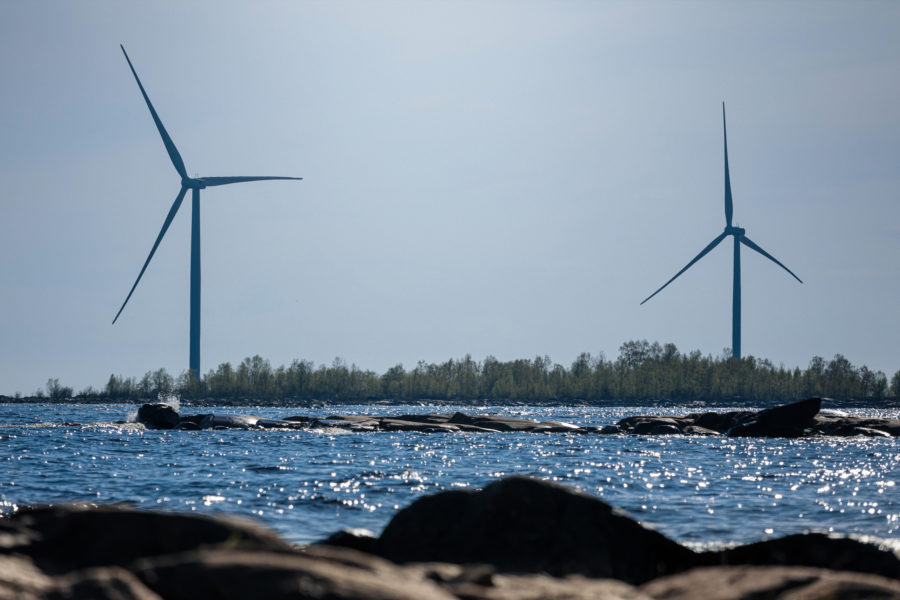The European Union aims to create a harmonised European electricity market. Jussi Jyrinsalo, Senior Vice President at Fingrid, summarises the benefits of this objective in three points.
“Competition and the free movement of electricity across borders will reduce the price of electricity. In the future, no country will be able to constantly generate cheap electricity alone.”
Harmonisation will also help in preparations against disturbances and in recovering from disturbances.
“In addition, a large network will promote the transition to the renewable electricity generation required for a clean electricity system. For example, the fluctuations in wind power generation need to be balanced out.”
Several high-voltage AC and DC transmission links
Finland’s main grid is part of the Nordic power system and the electricity market area formed by the countries on the Baltic Sea. The efficient operation of both of these requires good electricity transmission links.
Finland´s main grid is directly connected to the main grids in Sweden and Norway.
Finland’s main grid is directly connected to the main grids in Sweden and Norway. As the Nordic networks operate at the same frequency, AC connections can be built between Northern Finland and Northern Sweden.
Finland’s main grid is connected to the Russian and Estonian grids via high-voltage DC connections. DC means that the alternating voltage networks remain separate. For technical reasons, the submarine connection between Finland and Sweden also uses direct current.
According to Jyrinsalo, Fingrid will develop cross-border connections with Sweden and Estonia in the future. The potential for connections to Norway is limited by the geographical distance, while connections with Russia are hindered by the EU’s forthcoming carbon duties.

Cross-border connections provide a buffer
Potential bottlenecks in cross-border connections are caused by geographical factors, political decisions, and technical and economic aspects. A bottleneck can be considered structural when the grid cannot meet the transmission requirement.
The main grid works well within Finland. It has enabled the country to remain a single price area in the electricity wholesale market.
“Within Finland, there are no bottlenecks in the transmission grid that restrict the transmission of electricity and cause price differentiation in the electricity wholesale market,” Jyrinsalo explains.
Changes in the nature of electricity generation and consumption require further development of the internal transmission grid and cross-border connections.
However, changes in the nature of electricity generation and consumption require further development of the internal transmission grid and cross-border connections. For example, the cross-border capacity between Finland and Sweden is often insufficient, which means that the price of imported electricity rises in Finland.
The dramatic increase in the volume of weather-dependent wind power generation and the completion of the third nuclear reactor in Olkiluoto will place new demands on cross-border connections.
“We need larger buffers to even out fluctuations in electricity generation and compensate for any disruptions at Olkiluoto 3,” says Jyrinsalo.
The buffer enabled by cross-border connections will become larger in 2025 with the commissioning of the new Aurora Line connection between Finland and Sweden.
Maintenance and forecasting just in case
Outages cannot be avoided on cross-border connections, but substantial efforts are made to minimise and manage such outages.
Fingrid has boosted its efficiency by initiating a continuous internal on-call system to reduce the number and duration of outages in the HVDC connections.
Fingrid is responsible for the Finnish sections of two HVDC connections between Finland and Sweden and two between Finland and Estonia. Fingrid has boosted its efficiency by initiating a continuous internal on-call system to reduce the number and duration of outages in the HVDC connections. The on-call system speeds up the process of gaining situational awareness and starting repairs.
Last year, Fingrid distributed its maintenance activities among its partners in a new way. It reinforced its own organisation at the same time.
“As there are several projects in the pipeline for maintenance and extending the life cycles of HVDC connections, we transferred the maintenance of automation systems to Fingrid. We use outsourced service providers and device manufacturers in the maintenance of high-voltage equipment,” says Unit Manager Kimmo Nepola.
“Thanks to these changes, the availability and reliability of the HVDC connections remained good, and our ability to prepare for and react to faults improved further. We also cut costs.”
Managed outages handled in cooperation
In order to safeguard operations and manage transmission outages, the operation of cross-border connections is planned for the long term. The aim is to minimise harm to the electricity market due to maintenance work.
Fingrid is developing and harmonising the equipment maintenance programmes required for cross-border connections, both in-house and with its partners. Cooperation and communication between Fingrid and the other parties to the cross-border connections is an essential element.
“We try to schedule, coordinate, and organise transmission outages so they occur at the most appropriate time of year or during the most suitable operating conditions. We consider these things in collaboration with the transmission system operators in our neighbouring countries,” says Jussi Huttunen, expert at Fingrid. Transmission outages normally last between one and five days.






